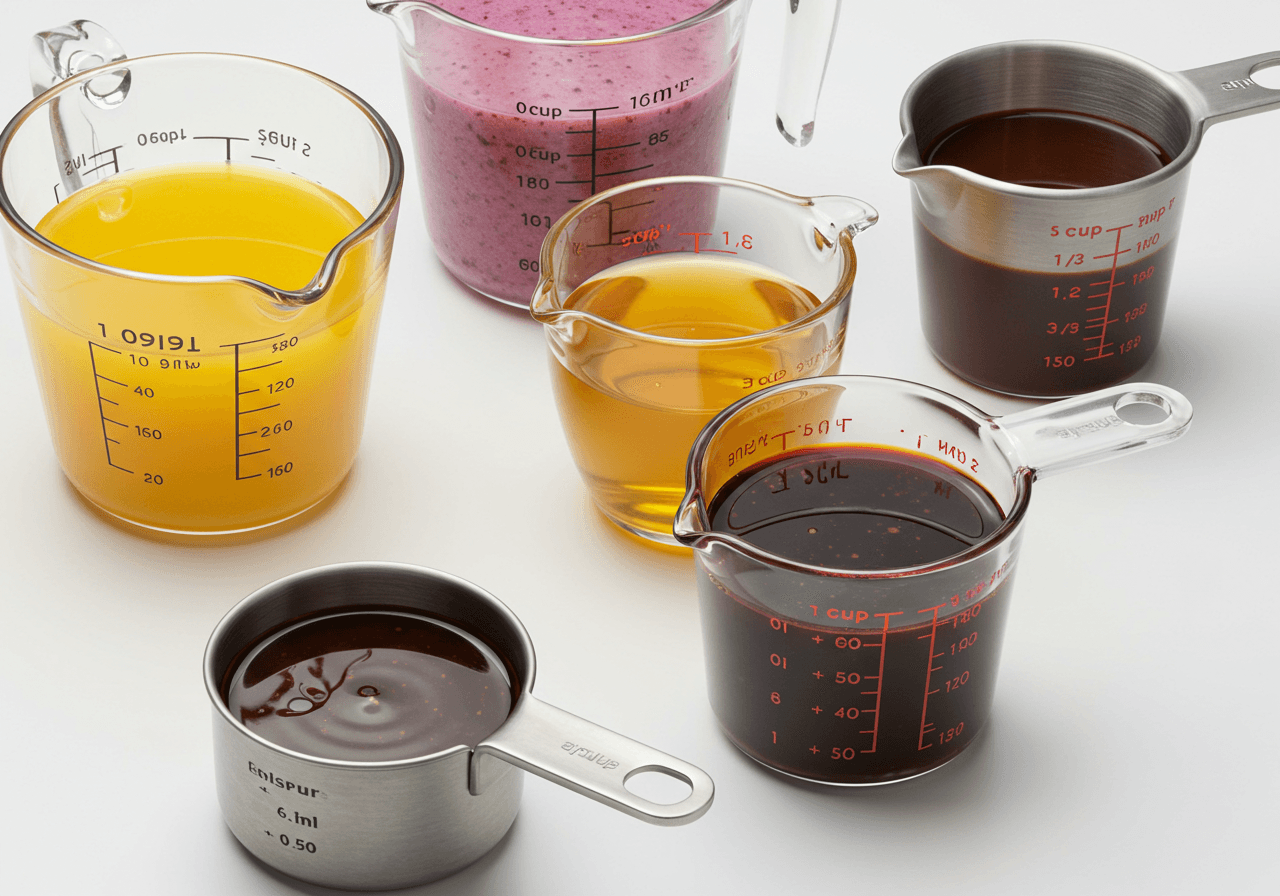Introduction
Understanding how many cups are in a pint is a fundamental question that arises in various contexts, from cooking and baking to mixology and even education. This conversion is crucial for ensuring that recipes are scaled correctly and that ingredients are measured accurately. In this post, we'll delve into the practical insights and benefits of knowing this conversion, provide an in-depth analysis of different measurement systems, offer actionable tips and strategies, address common challenges, and explore future trends in measurement.
Practical Insights and Benefits
Cooking and Baking
In the kitchen, knowing that 1 US pint equals 2 cups is essential for scaling recipes accurately. This is particularly important when converting between different measurement systems, such as from US to UK recipes. For instance, if a recipe calls for 1 UK pint of milk, you would need 2.4 US cups. This difference might seem minor, but it can significantly affect the texture and consistency of baked goods or the flavor of dishes.
Example: Scaling a Recipe
Imagine you're making a cake that requires 2 cups of milk, but you only have a recipe that uses 1 pint of milk. If you're using the US system, you can directly substitute 1 pint for 2 cups. However, if the recipe is from the UK, you would need to adjust it to 2.4 cups to maintain the correct proportions.
Mixology
In bartending, precise measurements are key to creating consistent flavors. The pint-to-cup conversion ensures that cocktails are made with the right proportions of ingredients. For example, if a recipe calls for 1 pint of juice, you can easily convert it to cups to ensure that your mixers are balanced.
Educational Value
Teaching students about these conversions helps them understand different measurement systems and apply this knowledge in real-life scenarios. It also fosters critical thinking and problem-solving skills, as students learn to adapt recipes and measurements based on the context.

In-Depth Analysis
Let's dive deeper into the conversions and their implications, focusing on the differences between US and UK measurement systems.
US vs. UK Measurements
US System
In the US, 1 pint is equal to 2 cups. This applies to both liquid and dry ingredients, although the volume might feel different due to the density of the substance. For instance, 1 cup of flour weighs less than 1 cup of water because flour is less dense.
- Liquid Ingredients: For liquids like milk or juice, 1 pint equals 2 cups exactly.
- Dry Ingredients: For dry ingredients like flour or sugar, the conversion remains the same, but the weight will differ due to density.
UK System
In the UK, 1 pint is larger, equaling 2.4 US cups. This difference arises because a UK pint is 20 fluid ounces, while a US pint is 16 fluid ounces. This means that if a recipe calls for 1 UK pint, you would need to adjust it to 2.4 US cups.
- Liquid Ingredients: For liquids, the UK pint is 20% larger than the US pint.
- Dry Ingredients: Similar adjustments are needed for dry ingredients, though the weight difference will be more pronounced due to the larger volume.
Conversion Examples
Understanding how to convert between pints and cups is essential for recipe scaling. Here are some examples:
- Converting Cups to Pints: If you have 4 cups of liquid, it's equivalent to 2 pints. For 7 cups, it would be 3.5 pints.
- Converting Pints to Cups: If a recipe calls for 3 pints, you need 6 cups in the US system or 7.2 cups in the UK system.

Tips and Strategies
Here are some actionable tips for using pint-to-cup conversions effectively:
- Use Conversion Charts: Keep a conversion chart handy to quickly reference how many cups are in a pint or other measurements. This can be especially useful when working with multiple recipes at once.
- Understand Context: Be aware of whether you're working with US or UK measurements to avoid errors in recipes. Always check the source of the recipe to ensure you're using the correct system.
- Practice with Real Recipes: Apply these conversions to actual recipes to become more comfortable with the process. Start with simple recipes and gradually move to more complex ones.
- Invest in Digital Tools: Consider using digital kitchen scales and smart measuring cups. These tools can automatically convert measurements and provide precise weights, reducing the risk of errors.

Common Challenges and Solutions
Challenges
- Measurement Confusion: One of the biggest challenges is mixing up US and UK measurements, leading to incorrect proportions in recipes. This can result in dishes that are too salty, too sweet, or have an off texture.
- Scaling Recipes: When scaling recipes up or down, it's easy to miscalculate if you don't understand the conversion factors. This can lead to wasted ingredients and disappointing results.
Solutions
- Use Consistent Measurements: Stick to one measurement system throughout a recipe to avoid confusion. If you're using a UK recipe, ensure all your measurements are in UK units, and vice versa.
- Double-Check Conversions: Always verify your conversions, especially when scaling recipes significantly. Use online conversion tools or apps if you're unsure.
- Label Ingredients: When measuring ingredients, label them clearly to avoid mixing up different batches or measurements.

Future Outlook and Trends
While the pint-to-cup conversion is a fundamental aspect of measurement systems, future trends in measurement might focus more on precision and technology:
- Digital Measurement Tools: The use of digital kitchen scales and smart measuring cups could become more prevalent, reducing the need for manual conversions. These tools can automatically adjust for different ingredient densities and provide precise measurements.
- Global Standardization: As global recipes become more accessible, there might be a push towards standardizing measurements internationally to simplify recipe sharing. This could lead to a more unified system, reducing confusion and errors.
- Smart Kitchen Appliances: Future kitchen appliances might integrate measurement systems directly into their interfaces, allowing users to input recipes and automatically adjust ingredient quantities based on the desired scale.






